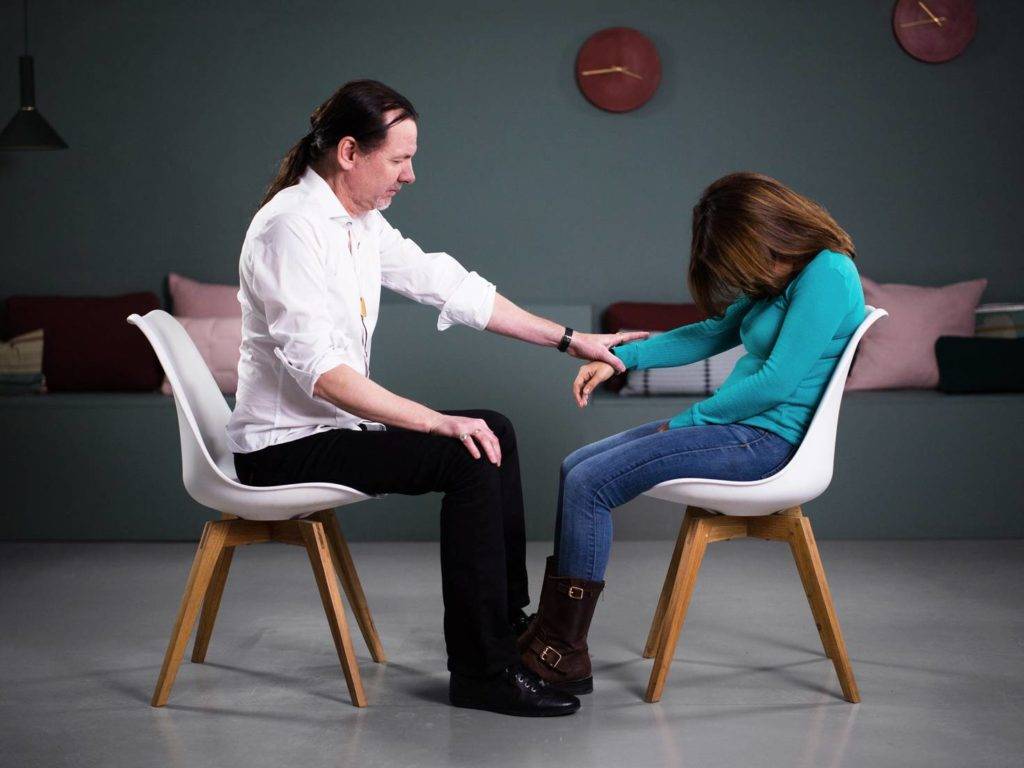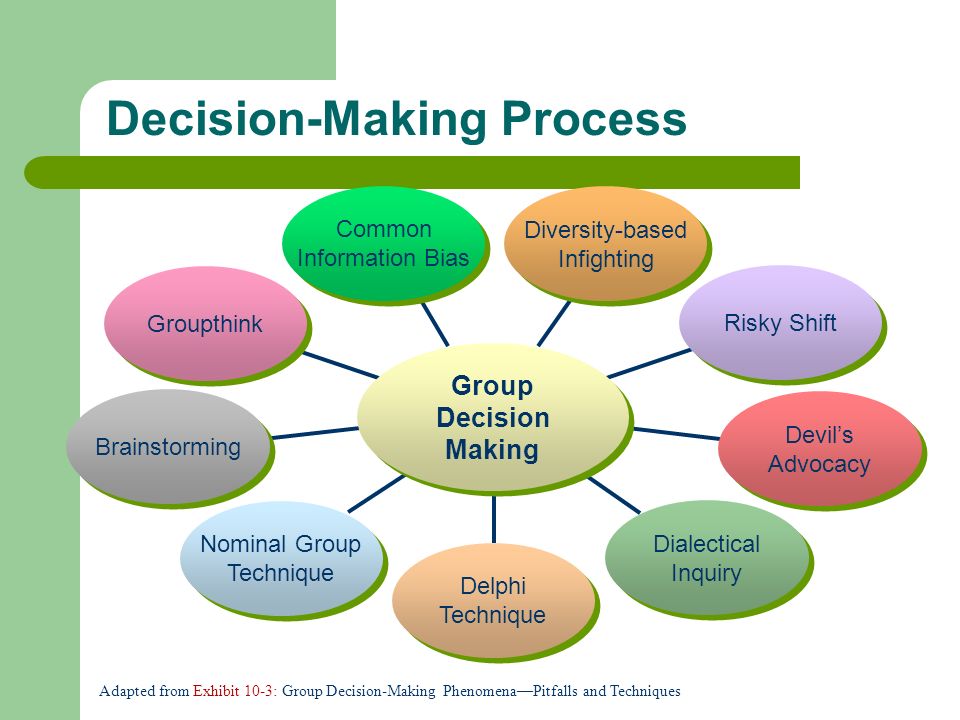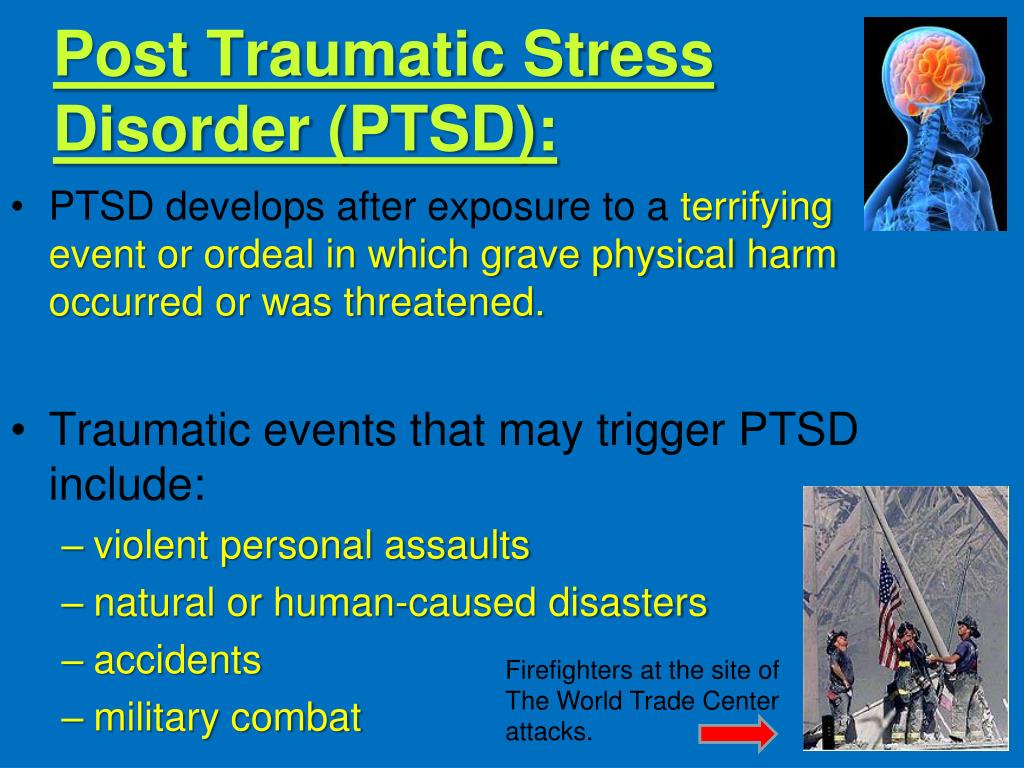Styles of psychotherapy
Different Types of Psychotherapy Explained
If you want help managing anxiety, depression or other mental health issues, but don’t know where to begin, you’re not alone. The world of psychotherapy can seem vast and confusing to those new to it. A wide range of therapeutic approaches exists, yet no single type is right for everyone.
To help you get familiar with the different therapeutic approaches, here’s a quick guide to four of the most widely-practiced forms.
Cognitive Behavioral Therapy (CBT)Cognitive Behavioral Therapy is a short-term, goal-oriented therapy that focuses on the link between our thoughts (cognition) and our actions (behavior). It is intended to help people change thought patterns that cause unhealthy, unproductive, or incapacitating behavior.
Psychotherapists often use this approach with people suffering from anxiety, depression, stress, or phobias. It’s also popular among people seeking to overcome harmful habits and addictions, such as smoking, overeating, or gambling.
During CBT sessions, you work with your therapist to learn how to recognize persistent negative thoughts or beliefs and respond to them more productively. For example, if you have the habit of thinking: “I’m terrible at everything” whenever you make a mistake, CBT is designed to help you notice this thought, identify alternative thoughts (e.g., “Mistakes don’t make me terrible; they make me human”), and choose a more realistic way to view the situation (e.g., “Although I made this mistake, I do many things correctly and now I have learned from this error”). It’s believed that making these positive shifts in your thoughts will lead to a positive change in your behavior.
Note that CBT does have a homework component—follow up occurs during sessions.
Psychodynamic TherapyPsychodynamic therapy emphasizes how certain life events and relationships, both past and present, affect your current feelings, relationships, and choices. Its goal is to help you acknowledge and understand negative feelings and repressed emotions so you can resolve internal psychological conflicts, and improve life experiences, self-esteem, and relationships. This approach is a popular treatment for people who are depressed.
This approach is a popular treatment for people who are depressed.
A psychodynamic therapist will encourage you to speak openly about a range of issues to help you to uncover different memories, experiences, or dreams that helped shape your life. In particular, you will explore the reasons why you have taken certain adverse decisions or actions in the past to help you avoid making similar unfavorable choices in the future. You can also use this new understanding of yourself to resolve current problematic situations and enhance relationships.
Psychodynamic therapy may sometimes be an effective short-term therapy, but it often takes a year or longer to obtain enduring benefits.
Dialectical Behavior Therapy (DBT)Dialectical behavior therapy (DBT) treatment is a form of cognitive behavior therapy. Its primary aim is to give people the skills to regulate their emotions, handle stress in a healthy manner, and improve relationships, and live mindfully. Originally developed to treat people with borderline personality disorder, DBT is now used to treat a variety of mental conditions and is believed to be especially helpful for people with seemingly uncontrollable, intense negative emotions or those who may incline toward self-harm.
Originally developed to treat people with borderline personality disorder, DBT is now used to treat a variety of mental conditions and is believed to be especially helpful for people with seemingly uncontrollable, intense negative emotions or those who may incline toward self-harm.
DBT differs from CBT in that it teaches you that your experiences are real and shows how to accept yourself, even with your unique challenges and life experiences. The treatment usually consists of both one-on-one sessions with a psychotherapist and therapist-led group sessions where the participants develop and practice skills and behaviors needed for a more manageable daily life. In both situations, DBT patients learn how to label emotions, handle angry feelings and navigate conflict without giving into impulsive tendencies, and develop awareness of their feelings during the present moment.
Like CBT, DBT also has a homework component. DBT is ideally done both in groups and in individually sessions simultaneously.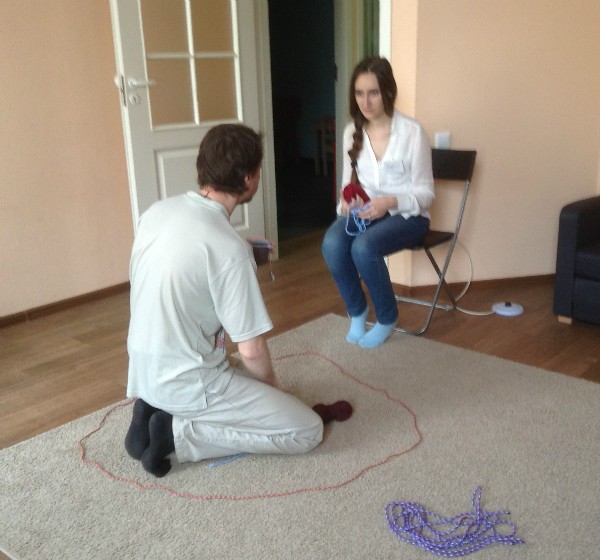 People generally find this mixture quite helpful.
People generally find this mixture quite helpful.
Unlike behavioral-based therapies, humanistic/experiential therapy focuses on a person’s individual nature rather than the collection of behaviors that make up a specific psychological category. The therapy’s holistic approach emphasizes the whole person, especially their positive behaviors and their ability to grow, heal and find self-actualization through self-exploration. People with depression, anxiety and panic disorders, and low self-esteem often seek this approach.
Humanistic therapy consists of two popular techniques: Gestalt therapy and client-centered therapy. Gestalt therapy helps people to center on “here and now” feelings and experiences rather than their perception of the root causes of those feelings. Your therapist will help you explore feelings and experiences through creative and experiential techniques, such as guided re-enactments, role-playing, exaggerated movement, and other exercises. The goal is to arouse emotions in different situations, allowing the person being treated to become aware of and understand those emotions as they happen.
The goal is to arouse emotions in different situations, allowing the person being treated to become aware of and understand those emotions as they happen.
Client-or person-centered therapy centers on the idea that people are capable of deciding for themselves the psychological areas they want to explore and know best how to go about it. Known as a “non-directive” form of therapy, the therapist does not guide the client toward any particular direction or outcome but creates a supportive environment for clients as they investigate their identity, feelings, experiences or emotions. You can expect your therapist to listen to your point of view with empathy, warmth, respect, and non-judgment, and to encourage your growth and self-realization.
The therapists at Manhattan Mental Health Counseling are caring, compassionate and well-trained in a variety of therapeutic skills and modalities. We are in-network with the following insurance plans: Aetna, Cigna, United and Healthfirst. Our therapists specialize in anxiety, depression, anger management, grief, trauma, life transitions, family issues, couple’s counseling, OCD, career counseling, women psychological issues including post-natal depression, addictions among others. We provide online therapy from the comfort of your own home.
We provide online therapy from the comfort of your own home.
Take a look at our Meet the Team page to see if you feel drawn to any one of our therapists.
Types of Psychotherapy for Mental Illnesses
Written by WebMD Editorial Contributors
In this Article
- What Is Psychotherapy?
- Benefits of Psychotherapy
- Types of Therapy
- Approaches to Therapy
- Psychotherapy Formats
- Types of Psychotherapy
- Tips for Effective Psychotherapy
- How to Choose a Therapist
- What to Expect During Psychotherapy
What Is Psychotherapy?
Psychotherapy, also called talk therapy, is a type of mental health treatment.
It’s often used either alone or with medications to treat mental disorders. During a psychotherapy session, you talk to a doctor or a licensed mental health care professional to identify and change troubling thoughts.
Benefits of Psychotherapy
Psychotherapy helps people with a mental disorder to:
- Understand the behaviors, emotions, and ideas that contribute to their illness and learn how to modify them
- Understand and identify the life problems or events -- like a major illness, a death in the family, a loss of a job, or a divorce -- that contribute to their illness and help them understand which aspects of those problems they may be able to solve or improve
- Regain a sense of control and pleasure in life
- Learn healthy coping techniques and problem-solving skills
Types of Therapy
Therapy can be given in a variety of formats, including:
- Individual: This therapy involves only the patient and the therapist.

- Group: Two or more patients may participate in therapy at the same time. Patients are able to share experiences and learn that others feel the same way and have had the same experiences.
- Marital/couples: This type of therapy helps spouses and partners understand why their loved one has a mental disorder, what changes in communication and behaviors can help, and what they can do to cope. This type of therapy can also be used to help a couple that is struggling with aspects of their relationship.
- Family: Because family is a key part of the team that helps people with mental illness get better, it is sometimes helpful for family members to understand what their loved one is going through, how they themselves can cope, and what they can do to help.
Approaches to Therapy
Psychotherapy can treat a wide range of of mental disorders, including:
- Depression
- Bipolar disorder
- Anxiety
- Anorexia, bulimia, and other eating disorders
- Posttraumatic stress disorder (PTSD)
- Schizophrenia
- Addictions
- Personality disorders
- Adjustment disorders
Psychotherapy can help you:
- Understand the behaviors, emotions, and ideas that may be behind your illness and how to change them
- Identify the life events, such as an illness, divorce, or childhood trauma, that may be at the root of your problems
- Regain a sense of control and pleasure in life
- Learn healthy ways to address problems
- Learn how to work with others to resolve conflicts
Sometimes psychotherapy can be an effective first treatment for mental disorders. But for many people, a combination of talk therapy and medication may work best.
But for many people, a combination of talk therapy and medication may work best.
Psychotherapy Formats
Therapy can be given in a variety of formats, including:
- Individual. This involves only you and your therapist.
- Group. You and others get therapy together. Everyone shares their experiences and learns that others feel the same way and have had similar experiences.
- Marital/couples. This helps you and your spouse or partner understand what changes in communication and behaviors can help and what you can do together. This type of therapy can also help a couple that is struggling with parts of their relationship.
- Family. Because family is a key part of the team that helps you get better, it is sometimes helpful for you family members to understand what you are going through, how they can manage their feelings, and what they can do to help.
Types of Psychotherapy
There are several approaches that mental health professionals can take to provide therapy. After talking with you about your disorder, your therapist will decide which approach to use.
After talking with you about your disorder, your therapist will decide which approach to use.
Different approaches to therapy include:
Psychodynamic therapy
Psychodynamic therapy is based on the assumption that you are having emotional problems because of unresolved, generally unconscious conflicts, often stemming from childhood. The goal of this type of therapy is for you to understand and better manage these feelings by talking about the experiences. Psychodynamic therapy is done over a period of at least several months, although it can last longer, even years.
Interpersonal therapy
Interpersonal therapy focuses on the behaviors and interactions you have with family and friends. The goal of this therapy is to improve your communication skills and increase self-esteem during a short period of time. It usually lasts 3 to 4 months and works well for depression caused by mourning, relationship conflicts, major life events, and social isolation.
Psychodynamic and interpersonal therapies help you resolve mental illness caused by:
- Loss or grief
- Relationship conflicts
- Role transitions such as becoming a parent or a caregiver
Cognitive-behavioral therapy
Cognitive-behavioral therapy helps people with mental illness identify and change inaccurate perceptions that they may have of themselves and the world around them. The therapist helps you establish new ways of thinking by directing attention to both the "wrong" and "right" assumptions you make about yourself and others.
Cognitive-behavioral therapy is recommended for people:
- Who think and behave in ways that trigger and perpetuate mental illness
- Who suffer from depression or anxiety disorders as the only treatment or, depending on the severity, in addition to treatment with antidepressant medication
- Who do not want to or are unable to take antidepressant medication
- Of all ages who have mental illness that causes suffering, disability, or interpersonal problems
Dialectical behavior therapy
Dialectical behavior therapy (DBT) is a type of cognitive behavioral therapy used for high-risk, tough-to-treat patients. The term "dialectical" comes from the idea that bringing together two opposites in therapy -- acceptance and change -- brings better results than either one alone. DBT helps you change unhealthy behaviors such as lying and self-injury through keeping daily diaries, individual and group therapy, and phone coaching.
The term "dialectical" comes from the idea that bringing together two opposites in therapy -- acceptance and change -- brings better results than either one alone. DBT helps you change unhealthy behaviors such as lying and self-injury through keeping daily diaries, individual and group therapy, and phone coaching.
DBT was initially designed to treat people with suicidal behavior and borderline personality disorder. But it has been adapted for other mental health problems that threaten a person's safety, relationships, work, and emotional well-being.
Comprehensive DBT focuses on four ways to enhance life skills:
- Distress tolerance. Feeling intense emotions like anger without reacting impulsively or using self-injury or substance use to dampen distress.
- Emotion regulation. Recognizing, labeling, and adjusting emotions.
- Mindfulness. Becoming more aware of yourself and others and attentive to the present moment.

- Interpersonal effectiveness. Navigating conflict and interacting assertively.
Supportive therapy
Your therapist coaches you on how to learn to manage your anxiety and unhelpful thoughts on your own. This approach helps bolster your self-esteem.
Alternative and complementary forms of therapy also may help. You can use them in combination with regular psychotherapy.
- Animal-assisted therapy. Dogs, horses, and other animals may help ease anxiety, depression, and bring comfort.
- Art and music therapy. This can allow you to express and process your grief and other feelings.
Tips for Effective Psychotherapy
Effective therapy depends on your active participation. It requires time, effort, and regularity.
Keep these tips in mind as you start your therapy:
- Attend all of your scheduled appointments.
- Work with your therapist to set goals at the start.
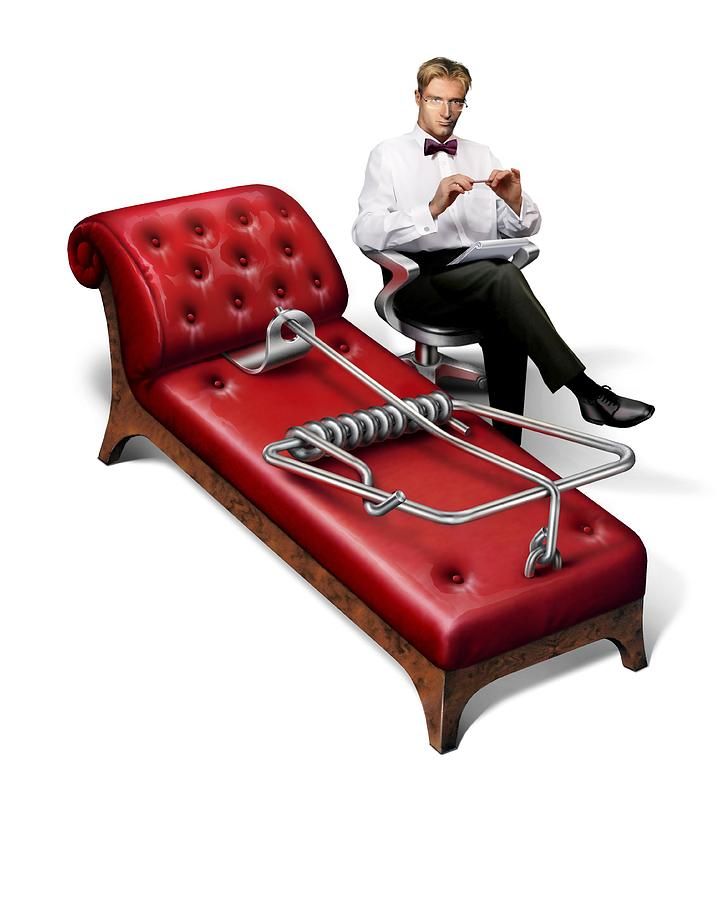 Review them from time to time.
Review them from time to time. - Identify sources of stress. Try keeping a journal and note stressful as well as positive events.
- Reset priorities. Emphasize positive, effective behavior.
- Make time for recreational and pleasurable activities.
- Communicate. Explain and assert your needs to someone you trust. Write in a journal to express your feelings.
- Focus on positive outcomes and finding methods for reducing and managing stress.
- Be open and honest. Success depends on your willingness to share your thoughts, feelings, and experiences and to consider new insights, ideas, and ways of doing things. If you're reluctant to talk about certain issues because of painful emotions, embarrassment, or fears about your therapist's reaction, let your therapist know.
- Stick to your treatment plan. If you feel down or lack motivation, it may be tempting to skip psychotherapy sessions.
 Doing so can disrupt your progress. Try to attend all sessions and to give some thought to what you want to discuss.
Doing so can disrupt your progress. Try to attend all sessions and to give some thought to what you want to discuss. - Don't expect instant results. Working on emotional issues can be painful and may require hard work. You may need several sessions before you begin to see improvement.
- Do your homework between sessions. If your therapist asks you to document your thoughts in a journal or do other activities outside of your therapy sessions, follow through. These homework assignments can help you apply what you've learned in the therapy sessions to your life.
How to Choose a Therapist
It’s important that you like and feel comfortable with your therapist. Thousands of licensed psychologists and other licensed professionals work in the U.S. Consider interviewing them by phone, video, or in person until you find a good match. You can find them by asking your family and friends for referrals, searching on the internet, checking with your health insurer, or contacting your local university.
Before you pick a therapist, you may want to ask:
- How much they charge
- If they accept insurance
- Hours for appointments
- Years of experience
- Areas of expertise
- Their treatment approach
- Whether or not they offer telehealth (virtual appointments)
What to Expect During Psychotherapy
Most therapy sessions last 45-50 minutes. It’s a guided conversation. Your therapist may ask many questions, especially when you’re starting out. They may want to know about your history and experiences, and about your feelings and worries.
It’s best that you both agree on the goals for your treatment. Your therapist may want to schedule more sessions. Some therapists can prescribe medication if necessary.
Conversation: Why Psychotherapy Isn't Fashion
Whenever the subject of psychotherapy comes up, depression and the statistics associated with it appear on the scene. Something like: "By 2030, depression will be the number one disease leading to disability. " Or: "Depression costs the world economy a trillion dollars a year."
" Or: "Depression costs the world economy a trillion dollars a year."
This statistic is quite impressive and comes from solid sources. It attracts the attention of the layman, is well absorbed by him and leads to reflections on how complicated everything in this world is arranged.
At the same time, it does psychotherapy a disservice in the sense that it limits its scope to depression and thereby strengthens it in the status of an extreme measure resorted to at the last moment, out of despair, when there is absolutely nothing else to do.
Advertising on RBC www.adv.rbc.ru
Why do we need psychotherapy?
The truth is that there are several billion people on the planet, each of whom carries a huge amount of pain, resentment, hatred, misunderstanding, feelings of restlessness and loneliness. These emotions do not prevent you from going to work and contributing to the global economy, they manifest themselves imperceptibly, gradually, behind closed doors.
People experience unreasonable fear and anxiety. Get angry out of nowhere. They live with a constant, incomprehensible sense of guilt. They don't like their partners but don't dare to leave, they suffer from insomnia, they beat their wives, husbands and children, they drink, take drugs and get really upset if their photo on social media doesn't get as many likes as they expected.
These people do not have depression, but they all need psychotherapy. To us all.
In order to accept (or reject) this statement, it is necessary to understand how the human psyche works: how it functions and how it is formed. For this, in turn, we need to turn to her first years - to the time when she is especially plastic and receptive.
A child's psyche is the finest self-adjusting tool that uses the outside world as a tuning fork. Every second, it processes a huge amount of incoming information: sometimes direct and unambiguous, sometimes contradictory and veiled. She structures it, evaluates it, compares it with her own impulses and desires. As a result of these calculations, some part of the information is internalized (assimilated and accepted as the basis of behavior), some is discarded, and some, burdened with nuances that the child's psyche is not yet able to process, is forced out into that mysterious area called unconscious.
As a result of these calculations, some part of the information is internalized (assimilated and accepted as the basis of behavior), some is discarded, and some, burdened with nuances that the child's psyche is not yet able to process, is forced out into that mysterious area called unconscious.
© illustration: Valeria Snoz
According to popular belief, Freud discovered the unconscious. This is not true. Throughout its history, thinking humanity has been groping for the idea of the existence of a certain mental area that is beyond the control of consciousness. In its various manifestations, it surfaced in Plato, Leibniz, Schopenhauer or the German romantics. Freud was the first to take this idea with all the seriousness of a scientist and fit it into the framework of the empirical method.
He was also the first to suggest that those emotions that are repressed into the unconscious do not go anywhere, but remain in it, accumulate and then manifest themselves in the form of various symptoms - be it unreasonable aggression, fear of spiders or self-doubt. You can follow this idea with a simple example.
You can follow this idea with a simple example.
The child grows up with parents who set out to make a “real man” out of him. For this reason, they pull him back every time he cries: “Well, it starts again!”, “Just a little - immediately into tears!”, “You are a man, stop it!”.
Being an unformed personality and not having the ability for critical thinking, the child takes the parents' opinion as an axiom, and a simple logical scheme is affirmed in his psyche: crying is bad. What are tears? This is a manifestation of emotion. Therefore, emotions are bad. The child begins to suppress them - and this is exactly the moment when emotions begin to be forced into the unconscious.
Shame (caused by those emotions that could not be suppressed), resentment at his parents (for not allowing him to freely express himself), and a general sense of his own depravity (because, despite all efforts, he still experiencing emotions).
Many others are added to this psychological construction, all of them are intertwined in the unconscious and form a huge bizarre mechanism with a completely unpredictable effect: either a bird will fly out, or a devil will jump out of a box, or a piano will crash from the height of a multi-storey building.
There are many varieties of psychotherapy, which, in turn, are subdivided into other varieties, and those into third varieties. There is existential psychotherapy, Jungian, cognitive-behavioral, body-oriented, gestalt, psychoanalysis, and so on. All of them differ in nuances, but their task is the same - to help the patient in studying this mechanism.
How does it work?
From a technical point of view, the psychotherapy session is arranged exactly as shown in Hollywood films. The patient sits down in front of the psychotherapist and begins to talk about everything that comes to mind. In this verbal stream, symptoms (or hints of them) immediately appear, which a good psychotherapist immediately notices.
Let's say a patient insists on approval. “Tell me, did I do the right thing?” he asks all the time. In response to this, the patient is invited to think about why approval is so important to him. He, as a rule, cannot answer, and then the therapist asks him to remember whose approval he lacks the most. The patient (who has never asked himself such questions) is surprised to realize that all his life he needed the approval of his mother, but never could get it.
He, as a rule, cannot answer, and then the therapist asks him to remember whose approval he lacks the most. The patient (who has never asked himself such questions) is surprised to realize that all his life he needed the approval of his mother, but never could get it.
© illustration: Valeria Snoz
Freud's important discovery called "transference" plays a major role in this scene. In his work with his first patients, he noticed that they tend to endow the psychotherapist with the features of people important to them (usually parents) and behave as they would behave with them, with the only difference being that in the transference this manifests itself brighter and more distinctly. Since then, the main task of the psychotherapist has been to allow the patient to see his hidden emotions in this transference (desire for maternal approval, fear of tears, anger towards his father), bring them to light, understand, accept and live in the safe sterility of the office.
What's in practice?
Psychotherapy is in an interesting position in Russia. On the one hand, the market is not developed and chaotic: this profession is not subject to licensing, and specialized education is in its infancy. On the other hand, right now the public interest is turning towards psychotherapy. It is being discussed more and more actively in the press, leaking onto television screens, serving as material for memes.
On the one hand, the market is not developed and chaotic: this profession is not subject to licensing, and specialized education is in its infancy. On the other hand, right now the public interest is turning towards psychotherapy. It is being discussed more and more actively in the press, leaking onto television screens, serving as material for memes.
However, finding the right psychotherapist is still not easy. The market is highly polarized. At one end are members of the scientific community, distinguished and experienced professionals, who, however, cost significantly more than the average and are distinguished by excessive seriousness. On the other - a hodgepodge of specialists of various levels, dilettantes, charlatans, self-taught and fortune-tellers on tarot cards. It's almost impossible to figure it all out on your own.
The most effective way to search is to recommend people you know. For those who do not have sufficient social capital, there is a bulletin board b17. ru - quite a worthy project, which, however, sins with disorder: it presents a lot of psychotherapists, but the filters and criteria for their selection are not very well developed.
ru - quite a worthy project, which, however, sins with disorder: it presents a lot of psychotherapists, but the filters and criteria for their selection are not very well developed.
© illustration: Valeria Snoz
Two more projects have recently appeared: the first is called Sreda and is a mixture of thematic media and a bulletin board, and the second is Yasno, a service where you can find a therapist and chat with him via video chat ("Clearly" - the project of the author of this material. - Approx. ed.) .
But the therapist is found - how to make sure that he is professional and trustworthy? First of all, pay attention to his education: a good specialist, as a rule, has a psychological faculty behind him, as well as studies at a specialized psychotherapeutic university. Counseling experience must be at least three years - otherwise the patient's problems will serve as educational material.
As for the work itself, a good psychotherapist never does the following things: he does not give advice, does not guarantee results, does not evaluate the thoughts and actions of the patient, and does not enter into friendly and even more romantic relationships with him.
Freud compared the human psyche with Rome - a city in which different time layers coexist, and the work of a psychotherapist with the work of an archaeologist, which consists in excavating this or that layer, presenting it to the public and explaining its place in the overall structure .
Actually, this is how a psychotherapist works. He does not engage in brainwashing, nor is it giving out clear and ready-to-use recommendations. Carefully and carefully, as if with a soft brush, he clears away psychological strata in an attempt to get to the bottom of the root cause, in order to then pull it out into the light, demonstrate it to an intrigued patient and help him get used to it, comprehend, accept and get rid of the chimeras generated by it. And to move, in the words of the same Freud, "from a miserable neurotic existence to ordinary human misfortune."
5. Leadership style of the group psychotherapist.
important role in group psychotherapy behavior of a group psychotherapist, which is largely determined by the theoretical orientation, but in general, his position can be characterized as non-directive.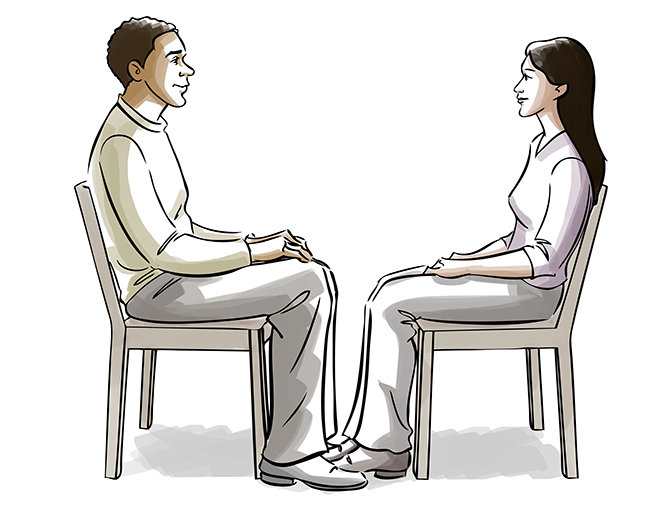
Basic tasks of the psychotherapist can be formulated thus:
one) encouraging group members to act attitudes, attitudes, behaviors, emotional reactions and their discussion and analysis, as well as to the analysis of the proposed topics;
2) creation in the group of conditions for complete disclosure by patients of their problems and emotions in an atmosphere of mutual acceptance, security, support and protection;
3) development and maintenance in the group certain standards, flexibility in choosing directive and non-directive techniques impact.
Funds influences used by group psychotherapists can be conditionally divided into two types: verbal and non-verbal.
To verbal means of influence include: structuring the course of classes (one of the most important functions of a psychotherapist), collection of information, interpretation (reflection emotions, clarification, confrontation, interpretation proper), belief, persuading, providing information, setting tasks.
To nonverbal funds include facial expressions, gestures, intonation.
Style manuals – typical for this conceptual model system and methods of interaction leader and other members psychotherapeutic group.
TO. Levin identifies three styles of leadership (see table 2): authoritarian, democratic, conniving (anarchic).
Table 2 - Basic leadership styles
Authoritarian style – This is the way the leader interacts. and members of the group, assuming rigid ways to control, suppress someone's initiatives and discussions decision leader. The psychotherapist at the same time style - the most active and authoritarian group member.
Democratic style is the way the manager interacts and members of the group, assuming collective decision-making, encouraging initiative. Psychotherapist takes the position of an active partner.
Psychotherapist takes the position of an active partner.
conniving style - the way the manager interacts and members of the group, involving the elimination leader from leading the group.
Specially studies have shown what is the most effective leadership style - democratic. However, experienced psychotherapists believe that style guidelines may vary depending on from the psychological climate and extraordinary situations that often occur in a group.
Exists regularity that the more cohesive group, the less authoritarian and active supervisor.
Personal quality psychotherapists provide certain impact on leadership effectiveness. S. Slavson identifies the following main qualities which, in his opinion, needed for leader : balance, prudence, maturity, strength I, high threshold anxiety, susceptibility, intuition, empathy, rich imagination, determination, desire to help people, tolerance for frustration and uncertainty.
TO. Rudestam specific leadership considers enthusiasm, ability convince and subjugate others, self-confidence, mind.
Preferred in terms of psychotherapeutic guidance group is the presence of two psychotherapists, which allows everyone of which receive feedback on their behavior in the group. In this case psychotherapists professionally control each other and can turn attention to their own distortions in understanding of the group process and possible countertransference. Cotherapist often performs less experienced, beginner group psychotherapist who participating in the work, gaining experience in field of group psychotherapy.
Psychotherapist usually plays one of the following behavioral roles : expert, catalyst, conductor, sample participant.
Expert usually comments on actions and dialogues participants, trying to connect situations, arising "here and now", with situations and problems from everyday life. Manager's comments help participants to evaluate their behavior, see clearly how it works others and ultimately understand how it influences the content of their self-image and on the circumstances. However the psychotherapist should avoid the role excessive commentary, so as not to transform the therapy group into class.
Manager's comments help participants to evaluate their behavior, see clearly how it works others and ultimately understand how it influences the content of their self-image and on the circumstances. However the psychotherapist should avoid the role excessive commentary, so as not to transform the therapy group into class.
AT catalyst leaders promote development events in the group. They draw attention groups to current tasks, encourage group to action. According to Fibert, the psychotherapist “as if holding in front of group mirror in order for participants could see their behavior."
AT roles conductor The psychotherapist usually act in the early stages of formation groups or in difficult situations when The members of the group are at an impasse. The skill of a conductor lies in the regulation possible variations of intragroup behavior, in support of participants' attempts explore issues and discuss their thoughts and feelings, protection of participants from exposure to of them unacceptable for this group of forms behavior and in equalizing contributions members of a group interaction.